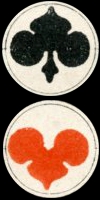 |
December 2022 |
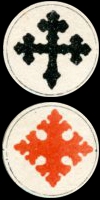 |
| The 3 decks from the
French auction indeed arrived early this month. So I could take my time,
as my choice for this spot had already been made up after winning the
lots. So here it is........ |
 |
December 2022 |
 |
| The 3 decks from the
French auction indeed arrived early this month. So I could take my time,
as my choice for this spot had already been made up after winning the
lots. So here it is........ |
In the auction catalogue the deck was attributed to Gustave Lenssen, a Dutch playing cards maker, and dated c1860. But there is no reference on any of the cards to that maker. However, the presence of a set of scenic aces with views of Batavia with captions in Dutch suggests a Dutch maker. There were not many playing card manufacturers left in the Netherlands in the 19th century. The company of Gustave Lenssen was based in Maastricht and was active there between 1838 and 1859. Thanks to Lex Rijnen, the expert on antique Dutch playing cards and their makers, we know that in the late 1850's the company has exported playing cards to the Dutch East Indies too: 169 gross in 1858 and 185 gross in 1859. A deck with a set of recognizable scenes on the aces could have been an attraction for the Dutch residents in the Dutch East Indies.
The
images on the courts are copies of the courts from a deck, which is known as
"Lohengrin & Tannhäuser". The maker of that deck is not clear.
France is mentioned as country of origin, but Jean Darquenne attributes the deck
to Wolfgang Reuter and dates it as c1855. Those courts were accompanied by a set
of aces with scenes from Wagner's Lohengrin and Tannhäuser, hence the nickname
of the deck. That deck was printed by steel engraving and the kings and queens
are named.
The Lenssen deck was printed in lithography, so there are differences although
the overall image looks the same. The names have been left out, but the special
suit signs were copied too. A noticeable feature are the delicate round cornered
outlines around the image within the square cornered cards. They were not used
in the original Reuter deck.
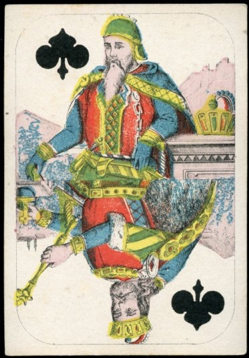 |
|
|
|
The courts have two different images each. The kings depict 8 German emperors or rulers from the Middle Ages. Jean mentions a few of them, such as Barbarossa (KS), Otto III and Heinrich I (both on KH). Lohengrin (top) and Tannhäuser are on the JH. |
||
|
|
||
|
|
|
|
|
|
|
|
|
The queens are named
after historical or legendary figures, such as Isabella von Thuringen
(top) or Gertrudt von Flandern on QC. |
||
|
|
||
|
|
|
|

A secondary reason to buy the deck were the special designed suit symbols,
repeated on each of the pip cards.
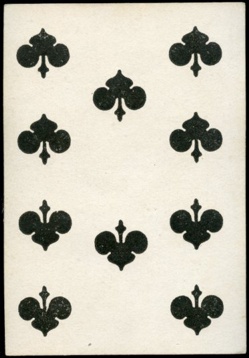
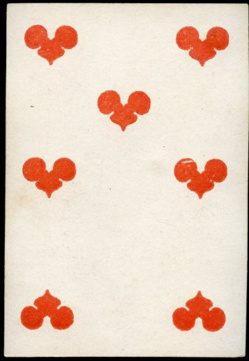
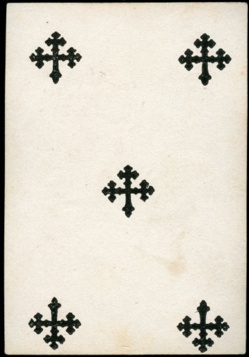
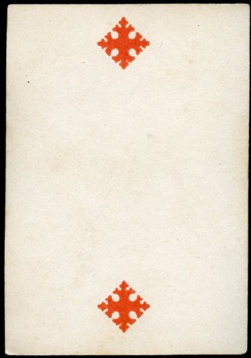
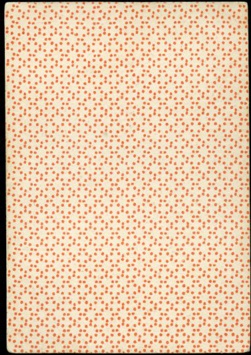
PS
It's nice to see how Facebook groups can give additional new information. I
posted a teaser for this Deck of the Month in a few groups and in the 52+Joker
group Paul Symons brought it to my attention, that Daveluy had produced a
similar deck with a similar set of aces.
Paul wrote:
"I think this may be an early version of the Batavia Playing Cards by
Daveluy. The aces have the same views and the suit signs are the same. Only some
of the courts are different".
I
replied:
"Thanks
for this interesting observation, Paul. It would certainly explain the thin
outline with the remarkable rounding of the corners, which acts as outline for
the gold finishing in the Daveluy deck. I too have compared the images on the
courts, but couldn’t find any differences. Some figures are just presented
upside down in your picture.
Of course the Daveluy is a luxury version, probably printed on porcelain card
with gold around the images. Still, it also seems to be derived from the deck,
which was attributed to Reuter by Jean. Similar designs of the courts, but
without the added names to the figures.
I’m not sure if my deck can be described as an early version of the Daveluy
deck. It rather looks like a poor man’s version of it and I doubt that Daveluy
would have published such a low quality version of this pattern and aces first.
When I took out the book about Daveluy (Biebouw/Clays/Cremers/D’hondt/Smet,
2004) the luxury version is dated 1860 – 1885. Luc has this Daveluy deck in
his collection too and shows it in his book on p45, with similar dating info,
referring to the Daveluy book from 2004.
But there’s an interesting discussion in the Daveluy book about the connection
between Daveluy and Lenssen, in which Jean Darquenne has explored plagiarism in
2 decks, attributed to Daveluy. In the case of the Moyen Age deck Jean concluded
that the original design was by Daveluy, but in case of this Batavia deck he
concluded that it was Daveluy, that had plagiarized the Lenssen deck, which was
based on the Lohengrin & Tannhäuser deck.
The first editions of the Moyen Age deck by Daveluy had a gold border, but not
rounded off on the inside. That feature came in later editions of the deck. So
it's even possible that Daveluy has copied the round corners from Lenssen. But
of course Daveluy did them in gold.
Click
HERE to see the
Daveluy version, which was added by Paul Symons to his post.